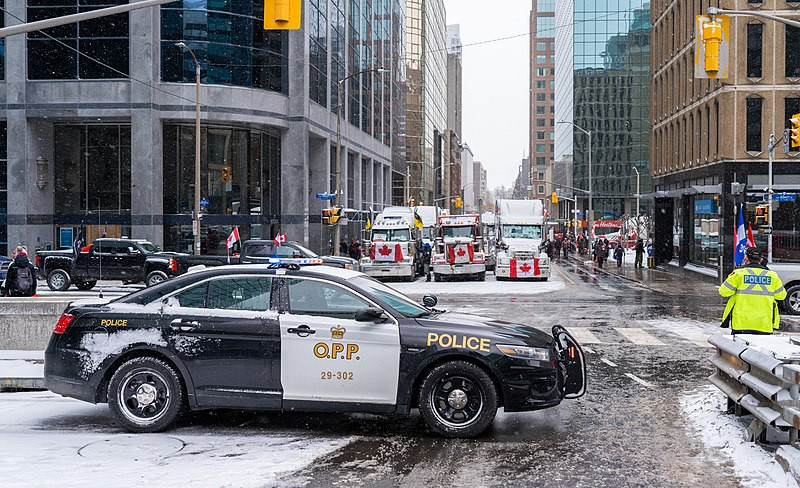Slow to act?
Examining the police response to the ‘Freedom Convoy’
Police responses to the Freedom Convoy protests across Canada have been criticized as slow, ineffective and even enabling. (Supplied photo - Wikimedia Commons)
The convoy arrived in Canada’s capital on Jan. 29 and remained until around Feb. 20, when a large-scale police operation cleared the streets. During these weeks, downtown Ottawa residents were subject to harassment, noise, pollution and confinement.
Ted McCoy, associate professor in the University of Calgary’s Department of Sociology, is an expert on criminology and social inequality.
“It seems that the Ottawa police are already experiencing a hard reckoning for their lax enforcement and for ceding the downtown core to the convoy,” he says in an email to The Uniter.
“I think it makes it very difficult for the police to argue they need more funding to do their jobs in the future.”
The protests in Ottawa – and, in fact, across Canada – led to the federal government’s unprecedented invocation of the Emergencies Act, which replaced the War Measures Act, infamously invoked during the October Crisis. Police departments claim this was necessary, as it provided them with the necessary forces to address the situation.
In addition to the Freedom Convoy protest in Ottawa, similar occupations occurred across Canada, including in Winnipeg.
Cerah Dubé is a member of Winnipeg Police Cause Harm, an organization calling for the abolition of the Winnipeg Police Service.
She claims that “police departments across the country are sympathetic to the causes the organizers of these occupations have been pushing.”
“The occupations would not have gone on this long without police support,” Dubé says.
Many of the convoy protestors believed police officers were sympathetic to their cause and were shocked when the police took action to end their occupation of downtown Ottawa. However, there are financial ties between individual police officers and the Freedom Convoy movement. Many Ontario police officers donated to the convoy’s GiveSendGo page, something authorities have vowed to investigate.
“We’ve seen historically, and tangibly in the last few weeks, that police will always support white suppremicist/fascist movements,” Dubé says. “Police departments across the country are sympathetic to the causes the organizers of these occupations have been pushing.”
In Winnipeg, a police spokesperson said that those in front of the legislature were “one of the most reasonable and welcoming” groups of protestors they have encountered. However, they did later issue a letter saying the protest had to end, which has since occurred.
Another dimension to these protests has been the policing costs imposed on governments. Dubé notes that police have benefited from overtime hours.
“We hope that people will remember this moment going into the municipal election this fall and that defunding the police will be a central issue,” she says.
While it is unclear how the protests and blockades might have been handled without police forces, it is clear that police responded differently to this protest than many other situations, including clearing homeless encampments in Toronto last year.
“It is difficult to escape the conclusion that there are different standards that the police themselves are determining,” McCoy says.
Published in Volume 76, Number 19 of The Uniter (March 2, 2022)






